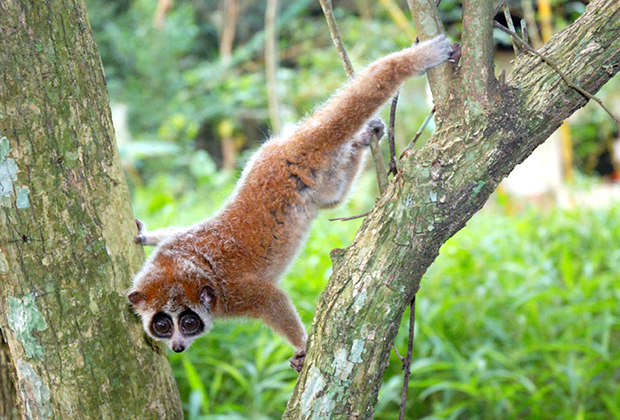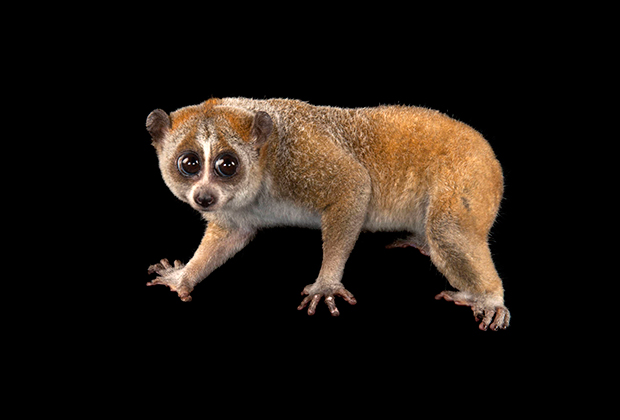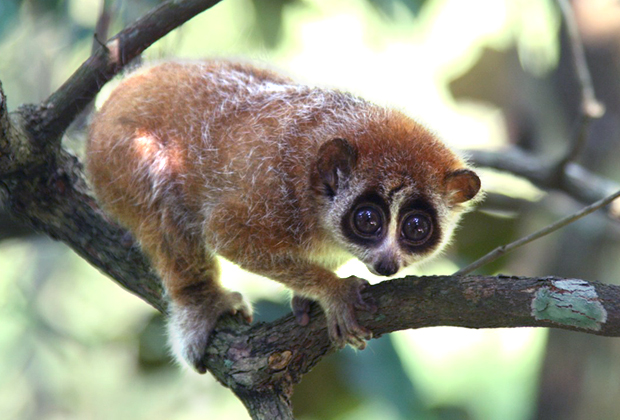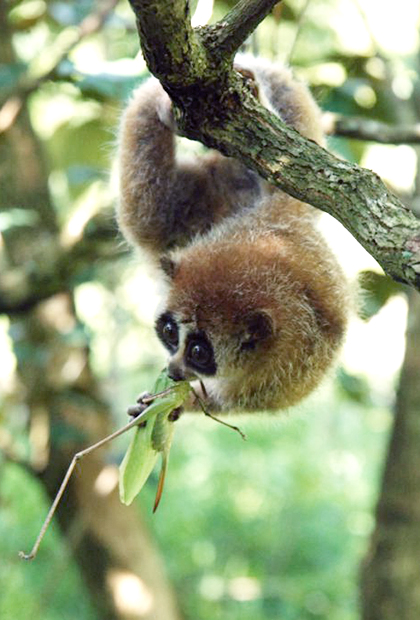(Visited 4,091 times, 4 visits today)

Pygmy Loris shows little variation between males and females. They range from 20-23 centimeter length and 300-600 gram in weight. Weight changes seasonally, with maximum weight at the onset of winter, and lowest in spring. In summer the dorsal fur is short and thick, reddish brown in color with an orange tinge, in winter the coat is thicker and darker with a black/brown dorsal stripe, silver frosting and denser fur on the nape. Ventral fur remains white. On their face, they have a small white stripe from the nose to the forehead that changes to a blackish fork shape in the winter and is often connected to the dorsal stripe. Unlike the Bengal Slow Loris, the Pygmy Loris has a black nose, black skin on the hands and feet and little hair on the ears, which appear more obvious.


The species is found east of the Mekong River in Vietnam, Cambodia, Laos, and southernmost China.
Found in a range of habitats, primarily evergreen, semi-evergreen, and secondary forests but also limestone forest, bamboo forest, and highly degraded forest. Pygmy Loris is nocturnal and arboreal. They forage alone consuming predominantly insects and tree sap but are also known to feed on nectars, lizards, small mammals, eggs and chicks. They are a seasonal breeder, giving birth one or two babies from January until March in Northern Vietnam.
Pygmy Loris is exploited for food and traditional medicine but the greatest threat at present is from the international pet trade, where animals are sold from 1,500-6,000 USD.
The species is protected across its range. In Vietnam, it is listed as Vulnerable in the 2007 Vietnam Red Data Book, and protected by law under Decree 32/2006 ND-CP: 1B.
This species is threatened with extinction and international trade is permitted only in exceptions circumstances.



Established in 1993, EPRC is a not for profit project dedicated to the rescue, rehabilitation, breeding, research and conservation of Vietnam’s endangered and critically endangered primate species.
© Endangered Primate Rescue Center 2020
Website by MINIMUMMEANS